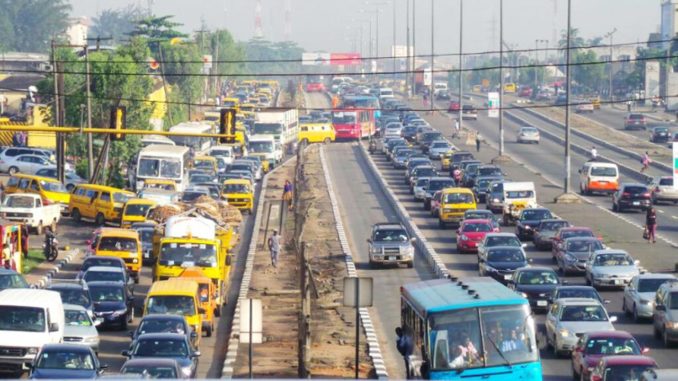
With a landmass of 3,577 square kilometres, about half the size of Abuja, Lagos is Nigeria’s smallest state. Still, it has a whopping 24.5 million inhabitants, the highest urban population in Nigeria. Putting these two facts together, its easy to see why traffic in Lagos has reached extreme levels such that Lagosians spend about 3 out of 10 years in traffic, making it one of the worst cities for driving.
Causes of traffic congestion in Lagos
Migration and infrastructure mismatch: According to the Governor of Lagos state, Akinwunmi Ambode, Lagos records the highest number of immigrants of all the megacities worldwide with an average of 86 migrants per hour; that’s about 2,000 each day and over 60,000 people each month. The state also has over 5 million registered drivers on its roads with a daily record of about 227 vehicles per kilometre, surpassing the national average of 11 vehicles. The fact is that the road infrastructure in Lagos is not increasing fast enough to keep up with these migration rates.
Bad roads: Nigerian roads are abysmal. Potholes are prime culprits of congestion in Lagos; they force drivers to slow down, which leads to “stop and go driving”. Having to change lanes regularly and even driving too close to each other has been proven to lead to traffic jams. Additionally, potholes are hazardous. Swerving around them can lead to accidents, which is then another cause of traffic jams.
Commercial bus drivers: Popularly known as Danfo Drivers. These drivers are notorious for violating traffic laws. They drive recklessly, drive against traffic, and drive non-road worthy buses. Worse is their act of passenger pickups at undesignated areas. Without warning, these buses stop on main roads and cause traffic jams. One example is at the Ajah bridge, where the buses and the market on the expressway are the sole cause of what could be an hour-long traffic jam.
Effects of traffic and the state’s response
Traffic reduces productivity in the state. Research has shown that traffic congestion contributes heavily to a driver’s stress and health. Spending long hours in traffic can lead to back pain and exposure to pollution, these factors mean workers are less able to work at their full potential, which leads to lost productivity; many Lagosians set out for work very early and get home at late hours. Businesses are impacted not just by having workers that are less productive but also by the cost of transporting goods on roads. It is no surprise that Lagos loses an estimated ₦42 billion annually due to lost productivity in traffic.
So how has the state responded?
Lagos State Traffic Management Authority (LASTMA): Introduced in 2000 with the objective of curbing road traffic congestion and accidents, LASTMA officials are placed at strategic positions across Lagos to monitor roads and improve traffic flow by controlling vehicle movements. It seems that LASTMA has made some ground in meeting its objectives. One disadvantage though is the extortion of innocent drivers. The act of stopping cars unnecessarily is against the aim of reducing traffic.
Road Construction: At the start of 2018, Lagos state released ₦5.5 billion to contractors for the construction of 181 inner roads stretching across 20 local governments. These contractors have been mobilised and have begun construction. Lagos State Government (LASG) also introduced a couple of toll roads around Lekki with an initiative towards reducing traffic congestion. However, because of a lack of alternative routes, traffic remains but this time with a fee.
Third mainland bridge remains one of the most notorious traffic jams at rush hour. Lagos state government have disclosed proposals for the implementation of a fourth mainland bridge. The proposed 38km bridge shall consist of four lanes and eight interchanges to promote an adequate road network system. However, the APC candidate for the upcoming gubernatorial elections has said that he will delay the bridge’s construction if elected.
Traffic management measures Lagos should implement
Every megacity has traffic, but the difference with Lagos is the absence of maintenance and sound policies. Roads, traffic lights, and public bus services in Lagos are barely maintained, and as a result, the traffic worsens. The government also ought to administer a time segregation policy on trucks and other heavy-duty vehicles, restricting them to off-peak hours. And the government also needs more bus stops that are not directly on the road to prevent unlawful pickups by commercial vehicles.
Apart from road management, the state can tackle traffic by expanding its infrastructure to accommodate a functioning waterway or rail transport system. Lagos is heavily interlinked with a network of waterways which could quickly form a means of transportation. Adequate investment in these waterways will benefit the citizens and the state’s economy, by creating jobs, tourist’s attractions and most importantly an alternative means of transportation to ease of traffic congestion in Lagos.
END

Be the first to comment